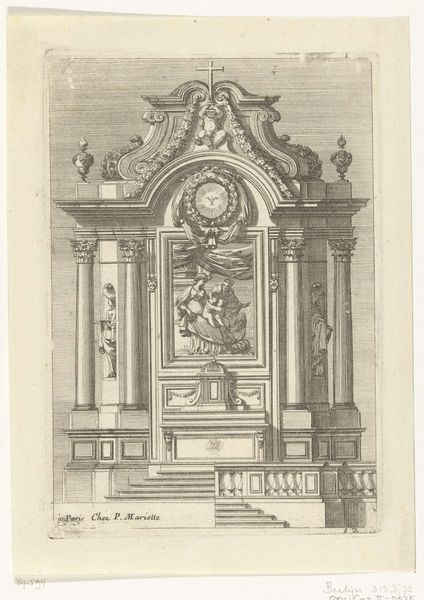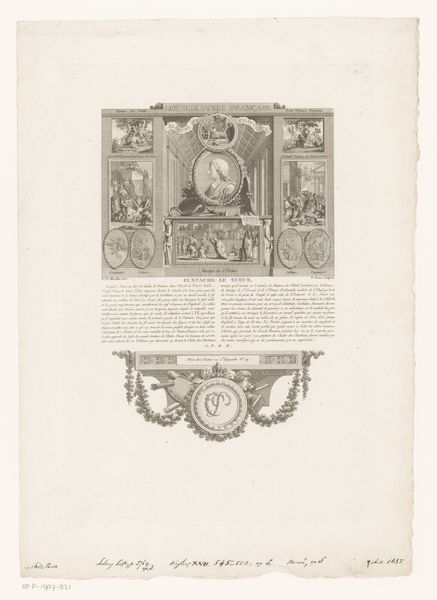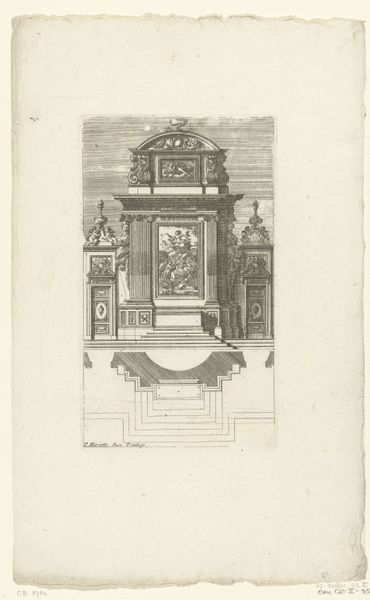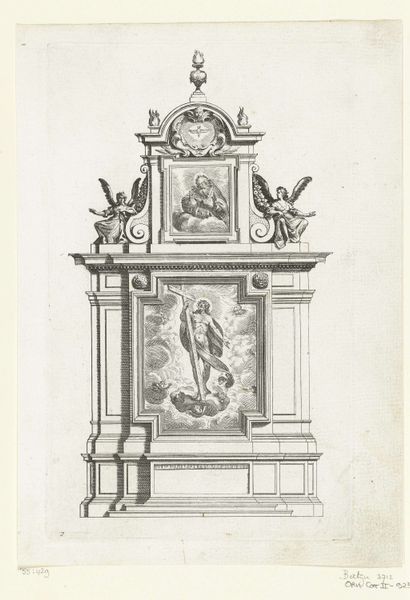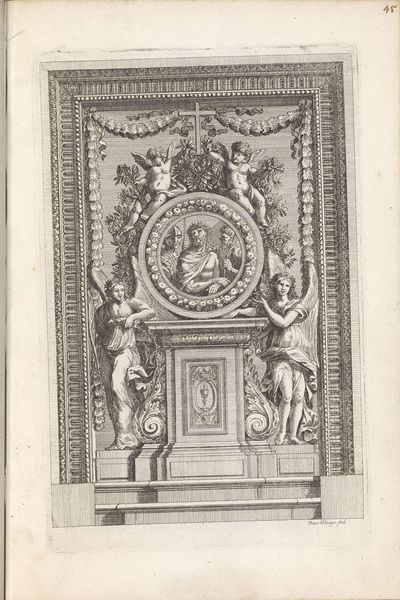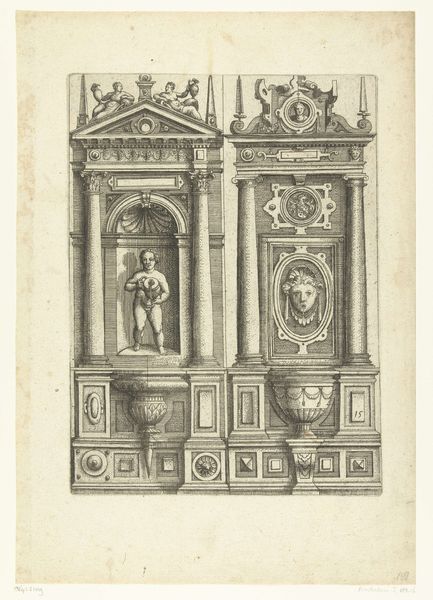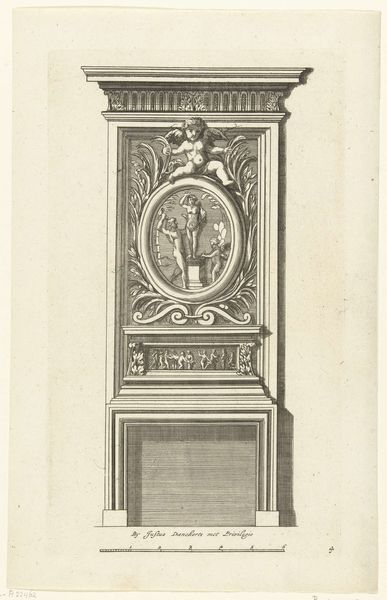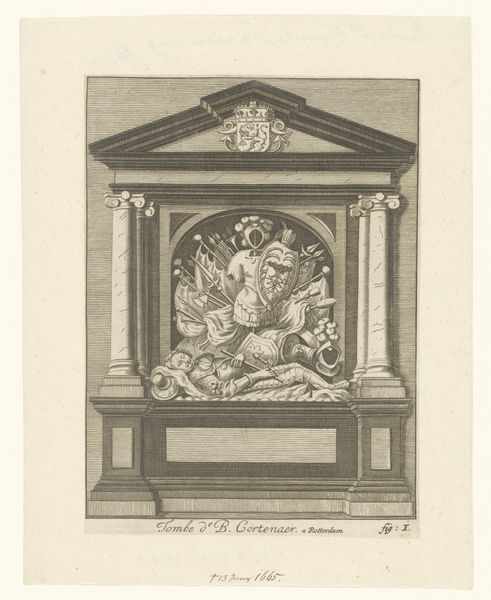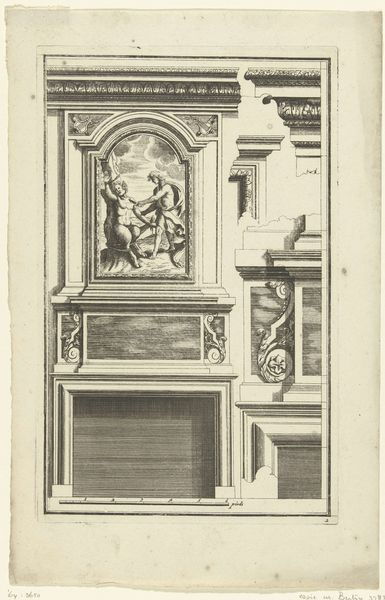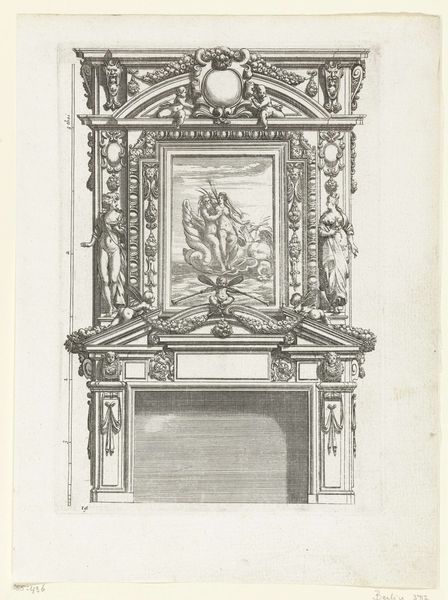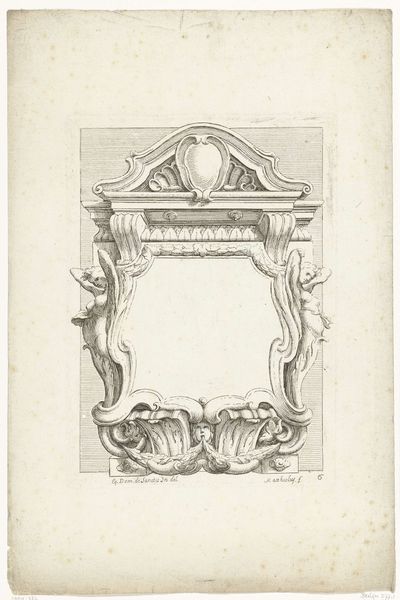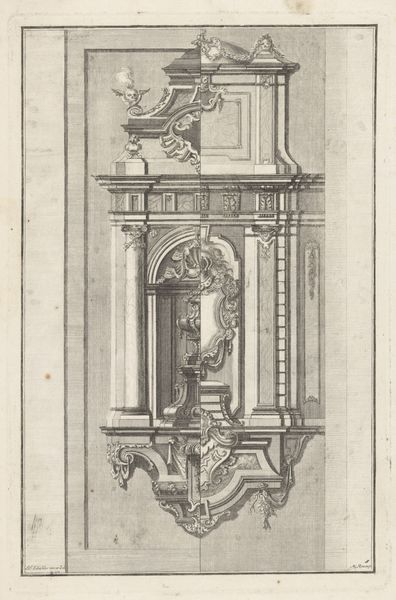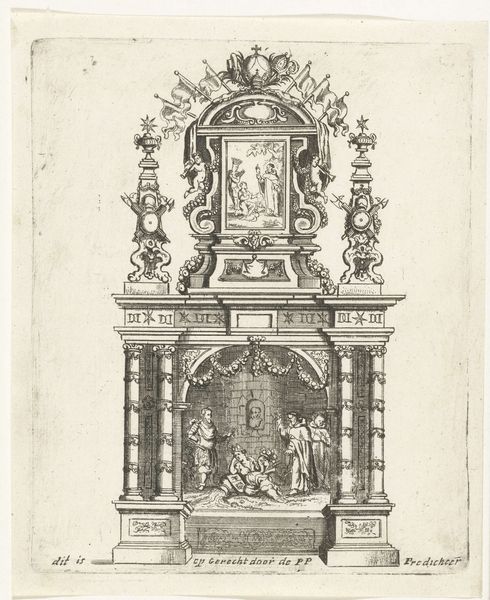
print, engraving
#
portrait
#
aged paper
#
toned paper
#
medieval
# print
#
old engraving style
#
figuration
#
old-timey
#
sketchbook drawing
#
history-painting
#
academic-art
#
engraving
#
calligraphy
#
monochrome
Dimensions: height 330 mm, width 243 mm, height 540 mm, width 405 mm
Copyright: Rijks Museum: Open Domain
Curator: Before us we have a piece titled "Portret van Thomas van Aquino," created between 1550 and 1570 by an anonymous artist. It's an engraving, showcasing intricate detail and design. What strikes you about it at first glance? Editor: The somber mood is immediately apparent. The monochrome palette and the density of detail in the engraving give it a gravitas fitting for a religious figure, although it feels a bit claustrophobic too. It also feels very distant, very much like history that sits behind a glass. Curator: I think that's partly attributable to the printmaking process itself. The fine lines of the engraving, etched and pressed, would have required skilled labor and a deep understanding of material properties—the metal plates, the paper, the inks. This isn't a quick sketch but a deliberate process. Consider the economic and social structures necessary for this artwork's production. Editor: Absolutely, but look closer at the frame itself and at the inclusion of Latin text—this positions Thomas within a specific intellectual tradition, emphasizing his scholarship and, more broadly, the Catholic Church’s cultural influence in Europe. How does that framing impact our reading of the portrait? Curator: It underscores the artist's intentions but the method has resonance as well. Engravings such as this had the capacity to be reproduced which brings up some of the questions we might consider when we are discussing artwork: What was its intended reach and intended audience, how did it get reproduced? Editor: And more crucially, who *didn't* have access to this kind of imagery? It served to solidify a very specific power dynamic and constructed narrative. Even this detailed depiction becomes an act of controlled representation. It's designed to communicate authority and learning. Curator: Which, looping back to materiality, reflects the controlled, rigorous nature of engraving itself. The final product here is determined through layers of expertise: the person who conceived the piece, those who physically engraved it, who printed it, who ultimately commissioned and circulated it. Every stage contributed. Editor: Ultimately this piece speaks volumes about power, representation, the church, and also how visual culture functioned in the 16th century, and beyond. These details tell a story far bigger than just Thomas of Aquino. Curator: It certainly does. Paying attention to materiality gives the context.
Comments
No comments
Be the first to comment and join the conversation on the ultimate creative platform.
